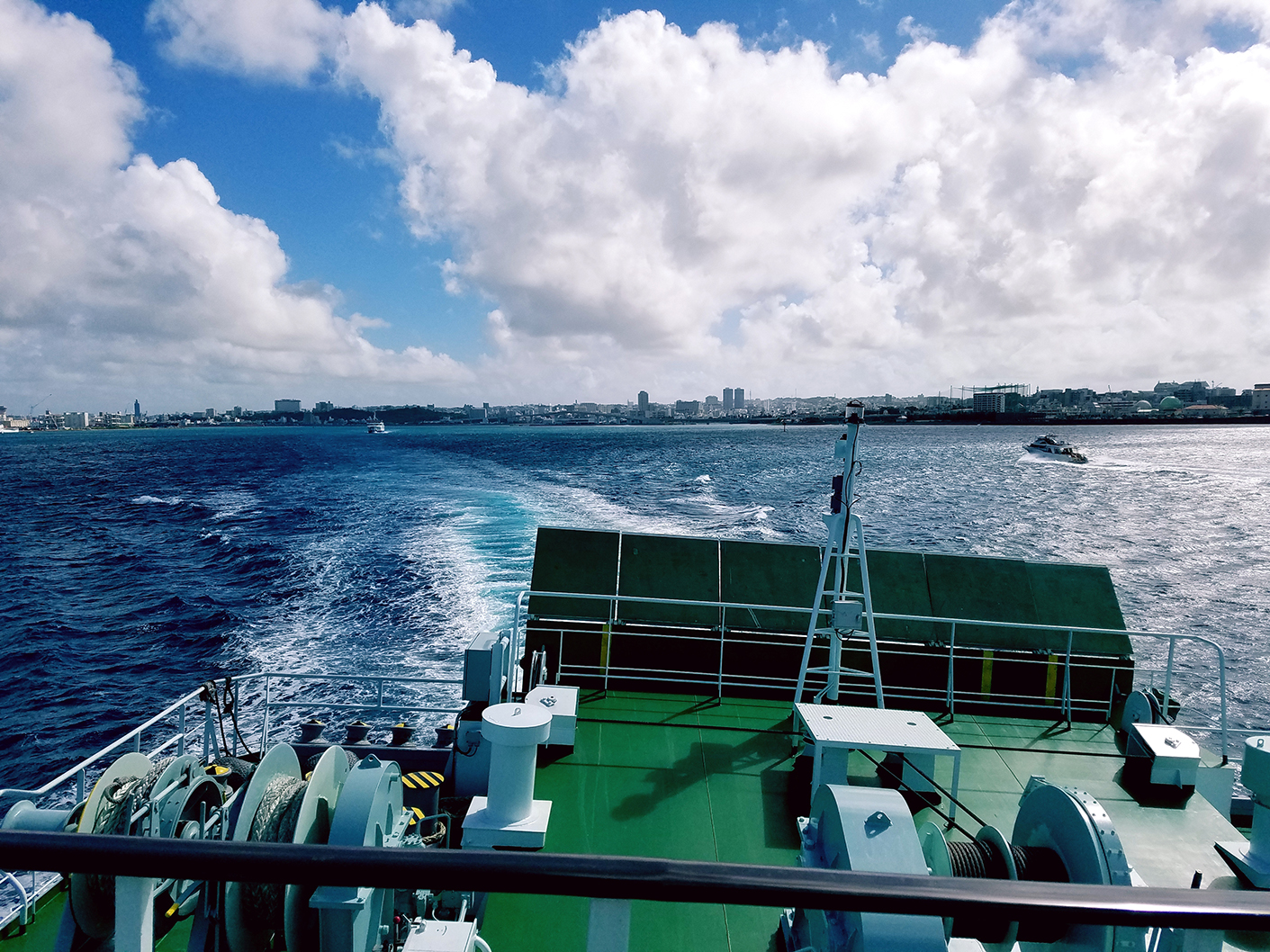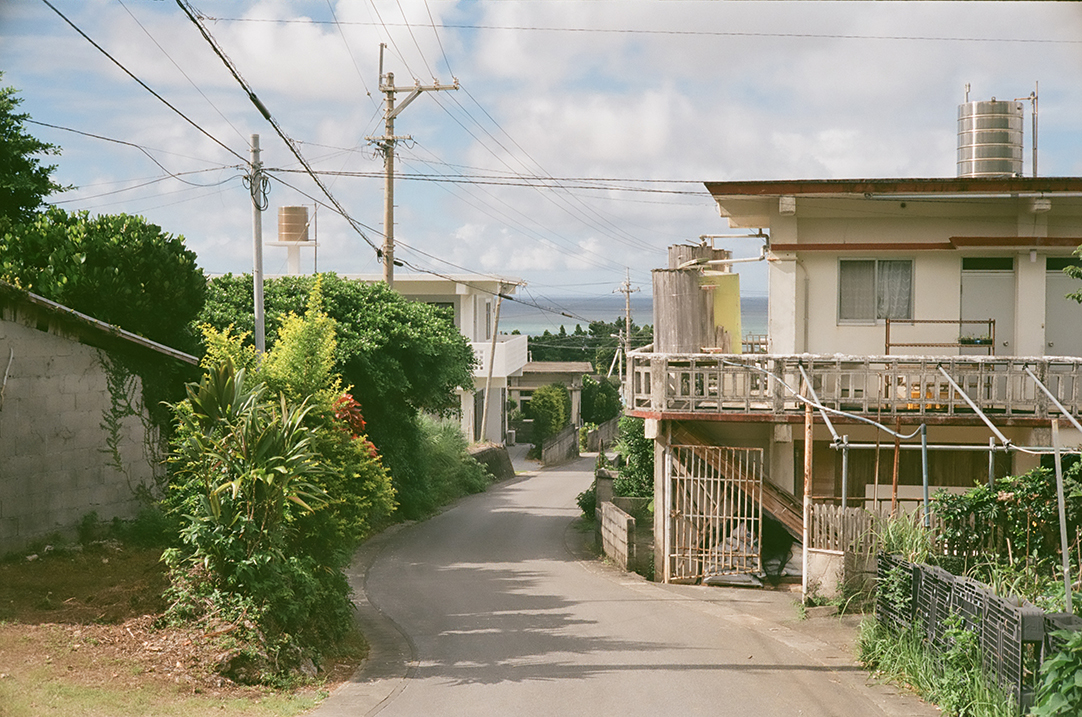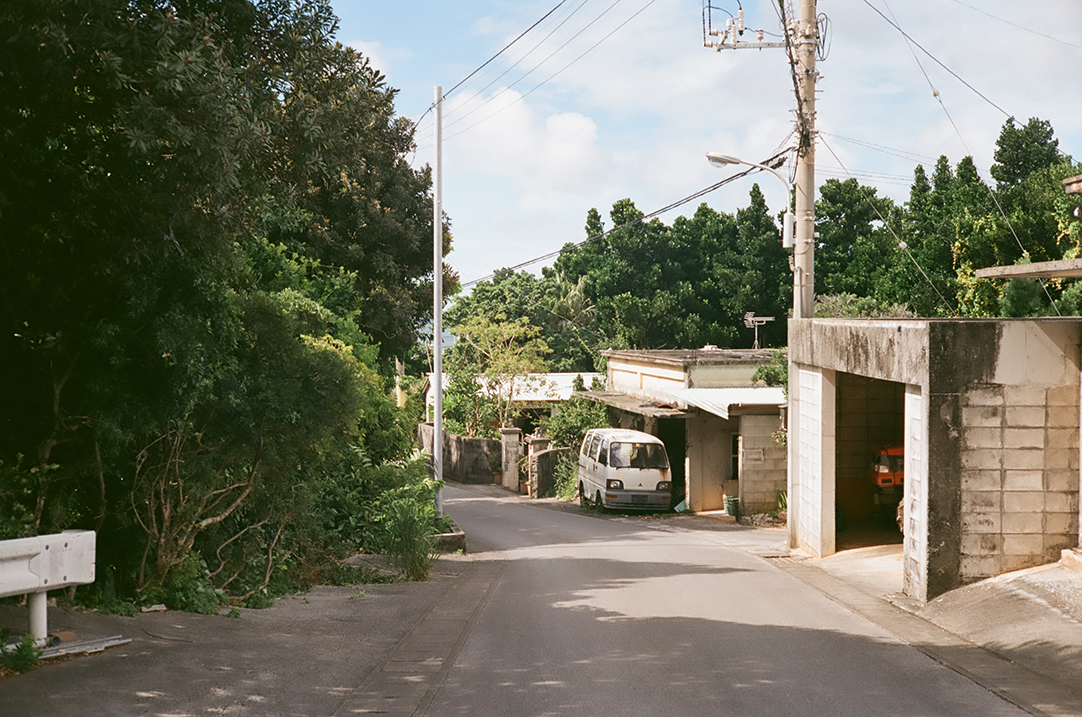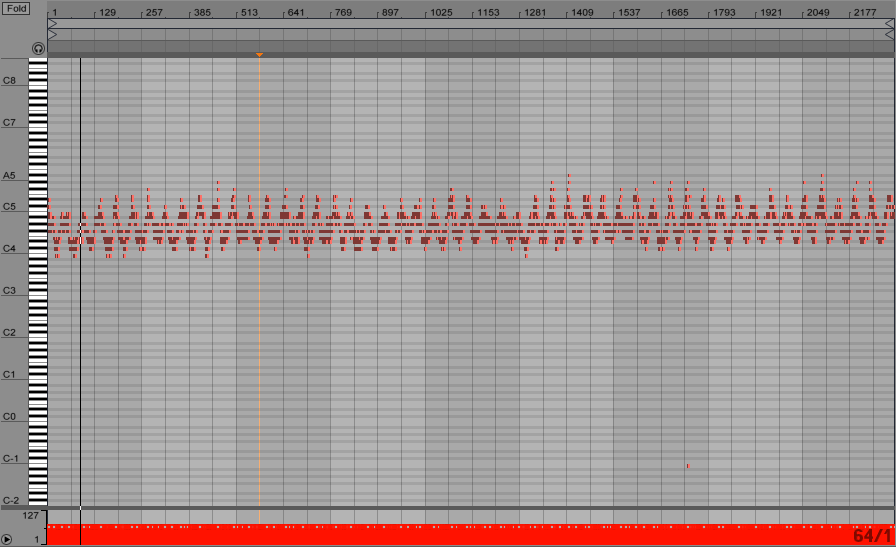Sea Levels in 1967;
Naha, Okinawa, Japan
Evan King
“I wanted to make something that sounded like the ocean or an underwater environment, if you digitized it.”
Interview by L. Valena
First, please describe what you responded to.
I responded to an illustration of a diver (maybe from the late 1800’s?) with a harpoon with a fish on it. I think what really stuck out with me was typically when you have nautical-themed stuff like that, you expect the color palette to be more blue and green, but this one was purple and orange.
What was your first reaction?
I think the purple and orange was what stuck out to me the most. It just wasn’t what you would expect given the subject matter.
And what did that telegraph to you? Did it translate into an emotion? What was it about it that stood out?
I guess it didn’t seem… it didn’t seem as organic as I would have expected, and that definitely influenced the way I approached my response to it.
Can you say more about that? How you translated your feelings into music?
Where I live is a huge part of it- right now I live in a Southern island in Japan, so I’m constantly faced with this kind of tropical environment. Lot’s of blues and greens, everything is kind of washed out and rusty, and has kind of a patina to it. That’s what I usually associate with things that are underwater. So, since the color palette in this illustration was so strikingly different from what I’m used to out here, I think that’s what immediately seized my attention. And was probably the biggest influence of how I made this piece.
I had the high level idea when I started that I wanted to make something that sounded like the ocean or an underwater environment, if you digitized it. That’s what the image reminded me of, based on the colors. It wasn’t trying to be a perfect recreation of it, patina and all, it’s kind of a digitized version of the scene underwater, based on the color palette.
So that digitized underwater idea- that’s where you went?
I guess if I talk a bit about the actual process, that might help. So, it’s kind of a converging of a bunch of things. I keep a field recorder on me, so I record stuff everywhere I go, and there are a bunch of field recordings in there from different places that I’ve been recently. Second to that, I like to include a little bit of randomness in the stuff I create, and in this particular instance I figured, okay, maybe this is a little wonky, but I think it ties in..
Everything about this project is wonky!
This is something I have had on the back burner for awhile, but this project kind of brought it to the forefront, and I figured I would just knock it out. I wrote a little program that takes spreadsheets and converts them into melodies. And I found a spreadsheet of sea levels in the town nearby where I live in Japan, and I was happy to find that they had data from as far back as 1967! That’s another element here, because in the image the suit this diver is wearing is very old school. So I figured I’d get the oldest sea level data that I could find, and maybe that would set the scene in spirit for this retro-futuristic dive, basically. So I converted that data into the melody you can hear in the background, kind of the beating pulse. I didn’t really write any of those notes, I just kind of generated them from the data.
Whoa! You caught them!
Right.
So cool. So you have these field recordings, and you made this program to crunch these sea levels, when you put it all together, what does it say to you now?
I think it tells a narrative, that sort of came about through the process, which is not something that I typically end up with when I’m creating music. So it was kind of refreshing for that narrative to emerge. Usually I’m more focused on creating a texture or a mood, based on the recordings that I’m working with, or whatever state of mind I’m in when I’m creating the piece. But with this one, there’s narrative in the sense that it tells a bit of a story about the subject of the image that I was responding to.
Is it telling the story of the human or the fish?
The human. I think the fish are there, but they’re not the subject.
What else do you want to say about this piece, or about this process?
I think the process of responding to someone else’s work, especially when you don’t know where it came from or who created it, is pretty interesting. It’s actually something I’ve wanted to have an opportunity to do, so I jumped at the chance to do it. I think it helped me have an outlet for a lot of different things I didn’t have an outlet for. Like the converting sea levels to music thing- I didn’t really have a practical use for that, until this project came up, and it connected. I guess it just helped me connect all these dots, which was really cool.
What advice do you have?
I would say don’t be afraid to abstract things, maybe almost obsessively. If you just look at something at face value, you might end up just recreating it in a different medium. Whereas I think if you can abstract different parts of it and let them become maybe different characters in a story, or in this case different visual things that create different concepts. Maybe this is completely out there, but for me it helped to abstract things as much as possible, and kind of go down the rabbit hole. What does this color sound like? What can this shape affect my approach, in this case create a different sound?
Yes- those elements of synaesthesia are probably the most interesting part of this project to me.
That is definitely the word I’m searching for. Synaesthesia.
Above: Photos by Evan King. From the artist- "some of my photos of Okinawa that convey the mood I mentioned in our chat, and a few of the process. I recorded the drum samples at the drum museum in Tokyo (pictured) and the ferry boat sounds on the Zamami ferry (also pictured). Sea level midi.png is a picture of what the sea level data looks like when it’s converted to music."
Call Number: Y3VA | Y7MU.kiSe
Evan King is a computer scientist and musician currently based in Japan. Raised in the high-desert mountains of rural New Mexico, he holds a BS in Computer Science from UNM. His most recent work in music explores the use of algorithmic composition, found sound and modular synthesis.







